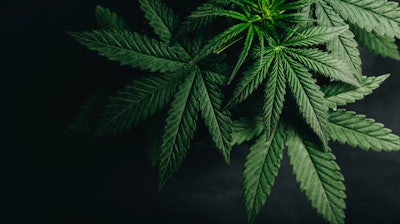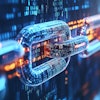
The cannabis-infused foods industry is still very new and has mostly been established by knowledgeable cannabis enthusiasts, many of whom having limited to no food industry experience. As these companies have grown, they have brought in members of the food science community to help refine and improve their products and processes. This has led to increasingly consistent high-quality edibles that are safe and effective for both medical and recreational consumers. This food-to-edibles transition has generated some interesting challenges that stretch skills and allow the industry to innovate in ways never experienced with typical food products.
The FDA, USDA and other regulatory bodies are in the process of evaluating cannabinoids as a food ingredient to ensure the safety of the consumer. Food industry veterans who have moved into the cannabis space are used to having clear direction and established scientific standards from these governing organizations. Due to the grey area that cannabinoids, CBD and THC specifically, have fallen into, food and beverage professionals entering this space will have to apply their experience to a space still seeking regulatory clarity and approval without the guidelines used to having in place. Adding an experienced food quality professional to any company producing edibles is an invaluable step in creating a robust food quality program and culture, leading to the quality products consumers expect.
There are key hurdles facing safety and quality in the cannabis space. These include identifying critical parameters for raw materials that lack federally established standards and oversight; developing appropriate, accurate testing methods for products that are different in nature than standard food products; identifying third-party labs with the capability and accuracy needed to validate established products and processes; educating cannabis industry experts and leadership on food safety; working within a uniquely arranged series of business units that are separated by state; and establishing the support systems in each place of operation to ensure quality is consistent throughout all production regions.
Identifying critical parameters for cannabinoids involves managing several intricate details. Since the cannabis plant is an agricultural product, its extracts can vary considerably if producers do not create systems to limit that variation. Another challenge is that there are few industry-wide standards for grades of CBD. Typically, Full Spectrum extracts a full profile of beneficial cannabinoids and terpenes from the plant. Full Spectrum will have trace amounts of THC, but not enough to feel any psychoactive effects. A hemp-derived Full Spectrum CBD product must have less than 0.3% THC content. Broad Spectrum begins as a Full Spectrum oil with the full range of beneficial cannabinoids and terpenes. It then goes through a process of refinement that removes all THC compounds. Isolate refers to the process that isolates CBD from the rest of the plant’s compounds including terpenes, other cannabinoids or waxes. This creates a product that tests as high as 99% pure CBD. Minor cannabinoid and terpene profiles can impact the potency and flavor profiles of products, making it difficult to maintain consistency and accurate label claims which is imperative to the consumables market.
Once critical parameters are established and standards are aligned, it is vital to develop appropriate, accurate testing methods that can be validated by third-party labs. Unfortunately, it is up to manufacturers and labs to determine methodology, which creates even more opportunities for inconsistency. Currently there are no ISO (International Organization for Standardization) or other standards set by accredited organizations, so quality managers must be critical when vetting third-party labs. Developing internal standards requires accumulating significant amounts of data to truly validate that a method is repeatable and accurate.
Food quality experts are used to educating different groups of people on what food safety and quality really means on an industry-wide level, so having to communicate these concepts to cannabis industry leadership and production employees is not new. The nature of the product does put a unique spin on this aspect of quality management. Throughout the industry, there is awareness of product quality in terms of the active cannabinoids, and potency is a key component of producing edibles containing CBD or THC. That awareness does not always extend to standard food safety concepts and requirements. Many producers are generally strapped for resources and often lean on their partners for guidance and reassurance when it comes to quality. Without federal regulatory systems in place to educate manufacturers as to what the expected food safety standards are, it is up to management to make quality a priority for the entire organization and find the appropriate resources or experts to educate their production teams and themselves on all the expected programs and applications to protect their products and customers.
Many companies producing cannabis-infused products are establishing facilities in multiple states that have legalized THC for recreational and medical use. This creates a unique situation where they also must identify and vet suppliers and their raw materials, as well as labs and other ancillary services in every state where they produce. This is relatively difficult, as there is no ability to cross-compare samples with already established labs verifying consistency, due to the inability to send THC across state lines. One way to overcome this is to create an internal testing program to ensure that all testing and results are accurate and consistent and replicate this setup in each state where production occurs. Depending on the parameters being tested, the equipment used and the number of states a company is producing in, this could be extremely expensive. In the end, it would be the simplest way to ensure quality and safety of raw materials and finished goods, as well as accuracy of third-party labs. Another option is to build a database of state-validated labs for safety and potency testing, while having a mobile production unit that includes equipment to test and verify that raw materials and products meet previously established specifications.
In the end, there are a lot of moving parts related to working with cannabinoids unique to this food space. Those building out safety and quality programs for these products are using systems and tools from experience in standard food production, while coming up with creative solutions for novel questions. At the same time, they are constantly pivoting to follow the evolving research and guidance with increasing legalization. Every day creates new challenges, with more ways to infuse cannabinoids to provide customers with the benefit of reliability, consistency, quality, safety and the best experience possible.


















